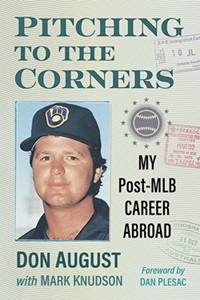Strike Three: Entering spring training in less than a month, coming off two consecutive 100-loss seasons, the Colorado Rockies obviously have issues. Starting pitching may be at the top of the list, but it’s not everything.
Ever since the ill-fated free agent signings by former general manager Jeff Bridich (Wade Davis, Ian Desmond, Daniel Murphy, etc etc) the Rockies have taken their rebuilding plan mostly in-house. They ventured out and signed free agent Kris Bryant – which has been disastrous – but other than that, it’s been all about the farm system.
And the farm system hasn’t totally disappointed – when you’re talking about position players at least. Gold Glovers Brenton Doyle and Ezequiel Tovar have been everything anyone could have asked for to this point. Others like Michael Toglia, Nolan Jones (acquired via a trade) and Jordan Beck look like keepers. While we know the pitching hasn’t been very good, defensively the Rockies were among the top 10 teams in the National League in fewest errors last season. They can throw and catch.
But the hitting part. Ugh.
These talented young players have a collective issue. A big one. They strike out too much. Way too much. Like, about 10 times per game too much.
Yes, “analytics” is partly to blame. The whole “ground balls are bad, fly balls are good” thing the numbers nerds preach has been so overplayed that suddenly striking out rather than grounding out is somehow viewed as a good thing, even with a man on third with less than two outs, when a simple ground ball to the second baseman would score a run, guys are swinging for the fence. And missing. A lot.
All MLB fans know that the “swing up and swing as hard as you can” trend in baseball is a thing for almost every team. Guys come to the plate with an all-or-nothing mindset these days, and in some cases, it works. The World Series champion Los Angeles Dodgers for example, hit a league-high 233 homers last season (playing at notoriously pitcher friendly Dodger Stadium) while striking out 1,336 times. That comes out to just over eight times per game.
In the Rockies case, it doesn’t. The team that plays its home games a mile above sea level hit 179 home runs while striking out 1,617 times, or almost exactly 10 times per contest. The team batting average was 18th in baseball at a lousy (especially at Coors Field) .242.
That should never happen. With the advantage of playing at Coors Field – with its vast expanse in the outfield – the Rockies should always be near the very top in team batting average. You don’t have to be a baseball savant to understand that putting the ball in play at Coors Field is a wise move.
Will the Rockies wise up this season?
We’ll find out.
This wasn’t just a problem last season. It’s been the norm for several seasons now. During that time, Colorado has been through a few different hitting coaches. The problem is obvious, yet apparently not enough has been done to address it. We can’t be certain what the Rockies players are being taught or told, by the team or by the glut of off season “hitting gurus” that players today get attached to. Whatever the reason for the lack of improvement, if the guys in purple pinstripes – who can’t continue to fall back on the “young and inexperienced” thing any longer – want to start competing for a postseason berth instead of competing for a high draft picks, they have to start putting the ball in play with much more regularity.
This is on the players to make the adjustment. Forget what your hitting guru is preaching and do what’s needed. Collectively, Rockies players need to make a commitment to refusing to strike out, especially with runners on base. Buck the trend, stop swinging up and start focusing on making more solid contact, even if the ball isn’t going over the fence.
The key for anything close to a Rockies revival is to bring back some version of the Blake Street Bombers. Jump start the stagnant offense by stopping the parade of strikeouts.





